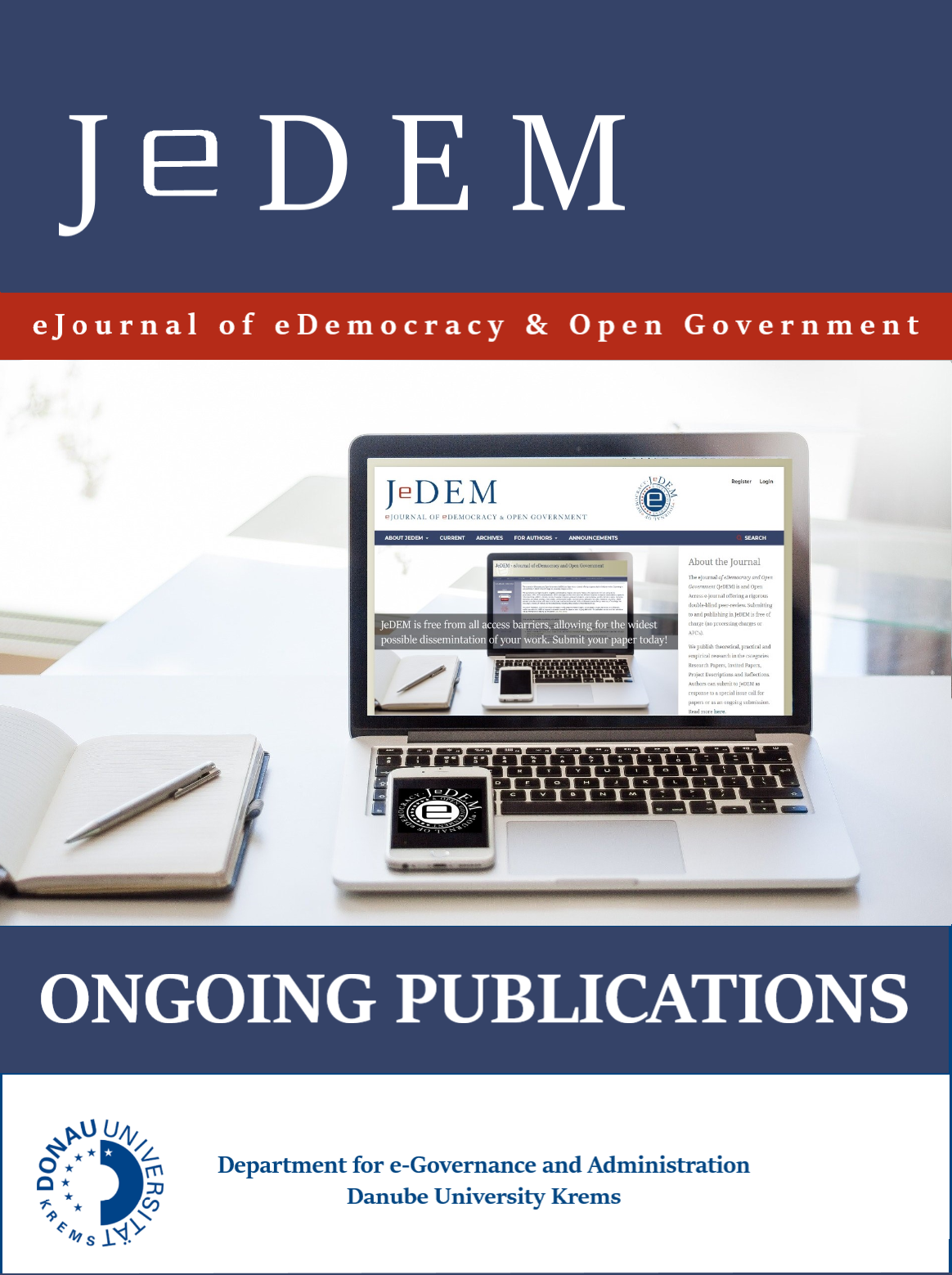Remote Usability Assessment of Topic Visualization Interfaces with Public Participation Data: A Case Study
DOI:
https://doi.org/10.29379/jedem.v13i1.640Keywords:
public consultation, topic visualization, usability, human-computer interaction, citizen participationAbstract
Citizen participation often faces challenges of transparency and accountability. Visualizations’s usability becomes key for public consultation activities. The tree map is frequently used to disseminate data and to give it back to the population. The purpose of this study is to understand how tree maps and stacked barcharts differ in terms of effectiveness, efficiency, and satisfaction in tasks, like solving topic categorization and comparison analysis tasks. An experimental design was used to examine user performance based on a task-based usability test. 34 participants interacted remotely with data visualizations from an open 2016 participatory constitution-making process. The ANOVA showed that stacked barcharts work significantly better for comparison tasks than the tree map, but there are no significant differences in regards to categorization tasks. Public participation initiatives should first determine what cognitive operations their users perform before deciding which visualization interfaces will be more useful for the intended public.
Downloads
Metrics

Downloads
Published
How to Cite
Issue
Section
License
Copyright (c) 2021 Ivania Yovanovic, Iñaki Goñi, Constanza Miranda

This work is licensed under a Creative Commons Attribution 3.0 Unported License.

JeDEM is a peer-reviewed, open-access journal (ISSN: 2075-9517). All journal content, except where otherwise noted, is licensed under the Creative Commons Attribution 3.0 Austria (CC BY 3.0) License.













